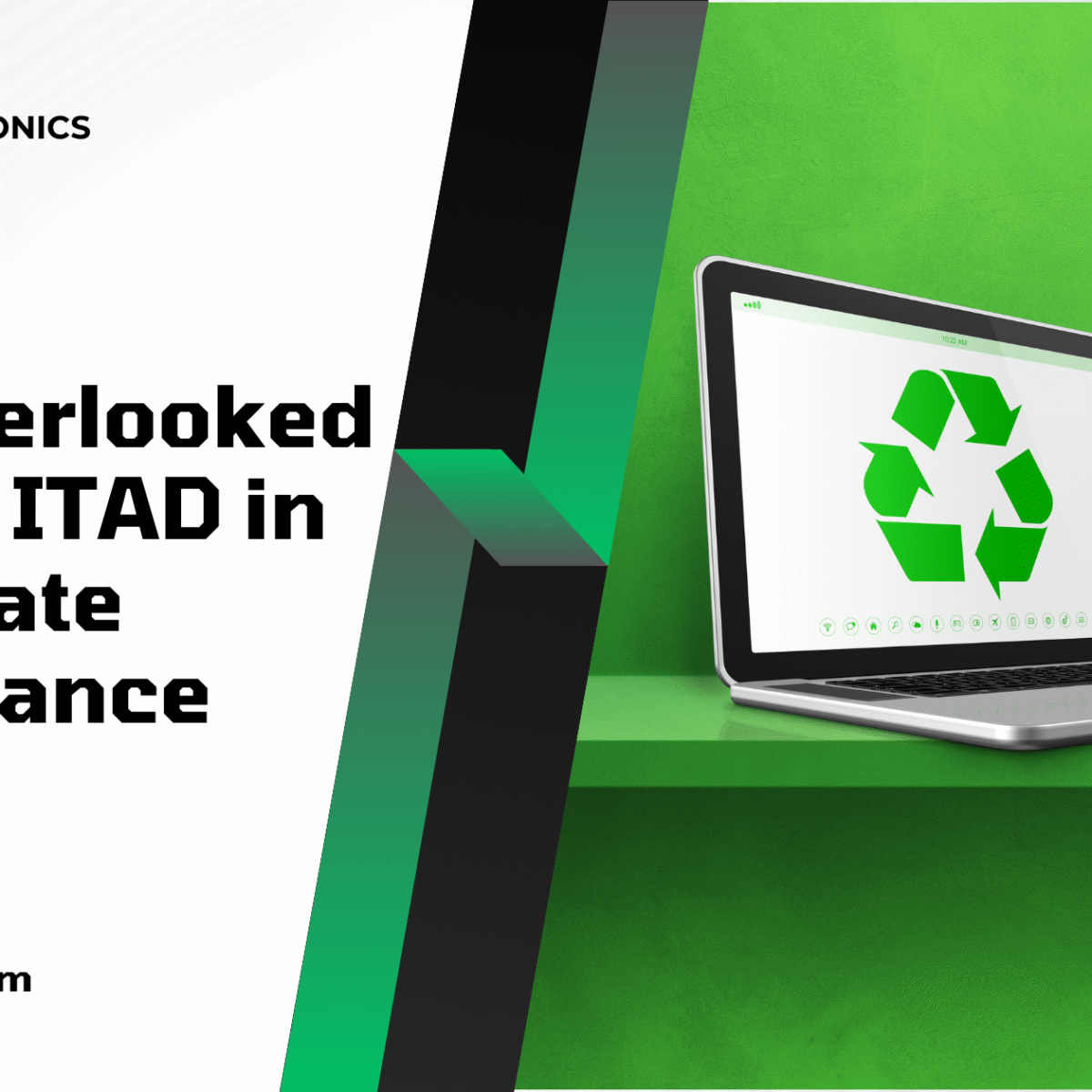Introduction
Every organization — regardless of size or industry — faces increasing scrutiny over how it manages data. From privacy regulators and investors to corporate auditors, the demand for transparency and accountability has never been higher.
Yet one area often missed during compliance reviews is IT Asset Disposition (ITAD). Retired computers, servers, and storage media may contain sensitive information that falls squarely under the same data protection and security rules as active systems.
Without a clear ITAD process — and documentation to prove it — companies risk audit findings, fines, and reputational harm.
Secure, compliant ITAD is no longer just a best practice; it’s a cornerstone of corporate governance, risk, and compliance (GRC) programs.
Why Auditors Care About ITAD
Modern compliance audits extend beyond financial statements. They include information governance, cybersecurity, and environmental management.
Key Regulatory Frameworks That Reference Data Disposal
- General Data Protection Regulation (GDPR) – Article 17 mandates the “right to erasure” and requires secure disposal of personal data.
- California Consumer Privacy Act (CCPA) – Requires proper deletion of consumer data upon request.
- HIPAA Security Rule – Mandates secure disposal of protected health information (PHI).
- Federal Trade Commission (FTC) Disposal Rule – Specifies standards for securely disposing of consumer report information.
- Sarbanes–Oxley Act (SOX) – Requires retention and secure disposal of electronic records to ensure integrity in audits.
- NIST SP 800-88 Rev.1 – Provides the U.S. government’s official data sanitization guidance.
Auditors now routinely verify whether organizations comply with these regulations — and ITAD processes play a crucial role in passing that scrutiny.
The Risks of Poor ITAD Documentation
Even if your company securely destroys equipment, failure to maintain proper records can result in audit flags.
Common gaps include:
- Missing Certificates of Destruction.
- Incomplete chain-of-custody logs.
- No formal ITAD policy or retention schedule.
- Lack of vendor certifications (e.g., R2v3, NAID AAA).
Auditors interpret these gaps as deficiencies in internal controls — the same category as unverified accounting entries or missing cybersecurity reports.
Certified ITAD as an Audit-Ready Solution
Working with a certified ITAD provider ensures audit-ready documentation and compliance alignment.
Certified ITAD vendors such as IER ITAD Electronics Recycling provide:
- Certificates of Destruction tied to individual asset serial numbers.
- Chain-of-custody tracking for every device.
- Compliance mapping to NIST, GDPR, CCPA, and HIPAA standards.
- Environmental accountability under R2v3 and NAID AAA certifications.
- Audit trail retention for 5–7 years.
This creates a defensible compliance record — a must-have during regulatory reviews or external audits.
Step-by-Step Best Practices for ITAD Audit Readiness
1. Create an ITAD Policy Linked to GRC Frameworks
Integrate ITAD into your corporate Governance, Risk, and Compliance (GRC) program. Reference standards such as NIST, ISO 27001, and your industry’s regulatory framework.
2. Standardize Asset Tracking
Use asset management software to log serial numbers, user assignments, and data classifications. This provides traceability when auditors request proof of asset disposal.
3. Work with Certified ITAD Providers
Only engage R2v3, NAID AAA, and ISO 14001 certified vendors. Request updated certificates and audit summaries annually.
4. Retain Documentation for Compliance Cycles
Maintain Certificates of Destruction and chain-of-custody reports for the same duration as other compliance records (typically 5–7 years, per SOX retention policies).
5. Align ITAD with Internal Audits
Have internal auditors periodically review ITAD policies, vendor performance, and documentation integrity.
6. Include ITAD in Risk Assessments
Quantify data breach exposure and sustainability impact from retired assets. Present ITAD performance in annual risk reports.
7. Train Compliance and IT Teams
Ensure that staff handling decommissioned assets understand data sanitization procedures and documentation expectations.
Sustainability and ESG Alignment
ITAD not only satisfies compliance obligations — it also supports sustainability and ESG reporting.
Organizations can track and report:
- E-Waste Diversion Rates – Devices reused or recycled vs. landfilled.
- CO₂ Reduction – Emissions saved through reuse and refurbishment.
- Hazardous Waste Avoidance – Safe processing of lead, mercury, and other materials.
- Social Responsibility Metrics – Donations of refurbished equipment to nonprofits or educational programs.
Incorporating these results into ESG and CSR (Corporate Social Responsibility) reports demonstrates proactive governance and accountability.
FAQs: ITAD and Compliance Audits
Q1: What kind of documentation do auditors expect for ITAD?
A: Certificates of Destruction, chain-of-custody logs, and vendor certifications (R2v3, NAID AAA) are standard audit evidence.
Q2: How long should ITAD records be kept?
A: Follow your industry’s compliance retention period — typically 5–7 years, or longer if required under SOX or HIPAA.
Q3: Does ITAD need to be covered in SOC 2 or ISO 27001 audits?
A: Yes. SOC 2 auditors and ISO 27001 assessors often review data disposal controls as part of information security management.
Q4: Can auditors penalize companies for using uncertified recyclers?
A: While auditors themselves don’t issue fines, they can flag the issue, triggering remediation or reporting to regulators.
Q5: How does ITAD support ESG and audit synergy?
A: ITAD provides measurable environmental metrics and traceable documentation, strengthening both ESG and audit reporting frameworks.
Conclusion
Corporate compliance audits are expanding beyond accounting and cybersecurity — and IT Asset Disposition has become a key part of the equation. Secure, certified ITAD ensures compliance with global data privacy laws, reduces risk exposure, and provides audit-ready documentation.
Companies that treat ITAD as part of their governance framework don’t just pass audits — they protect their reputation, data, and bottom line.
➡️ Be audit-ready with certified ITAD. Contact IER today to learn how our secure, compliant ITAD services strengthen your organization’s risk management and compliance programs.

